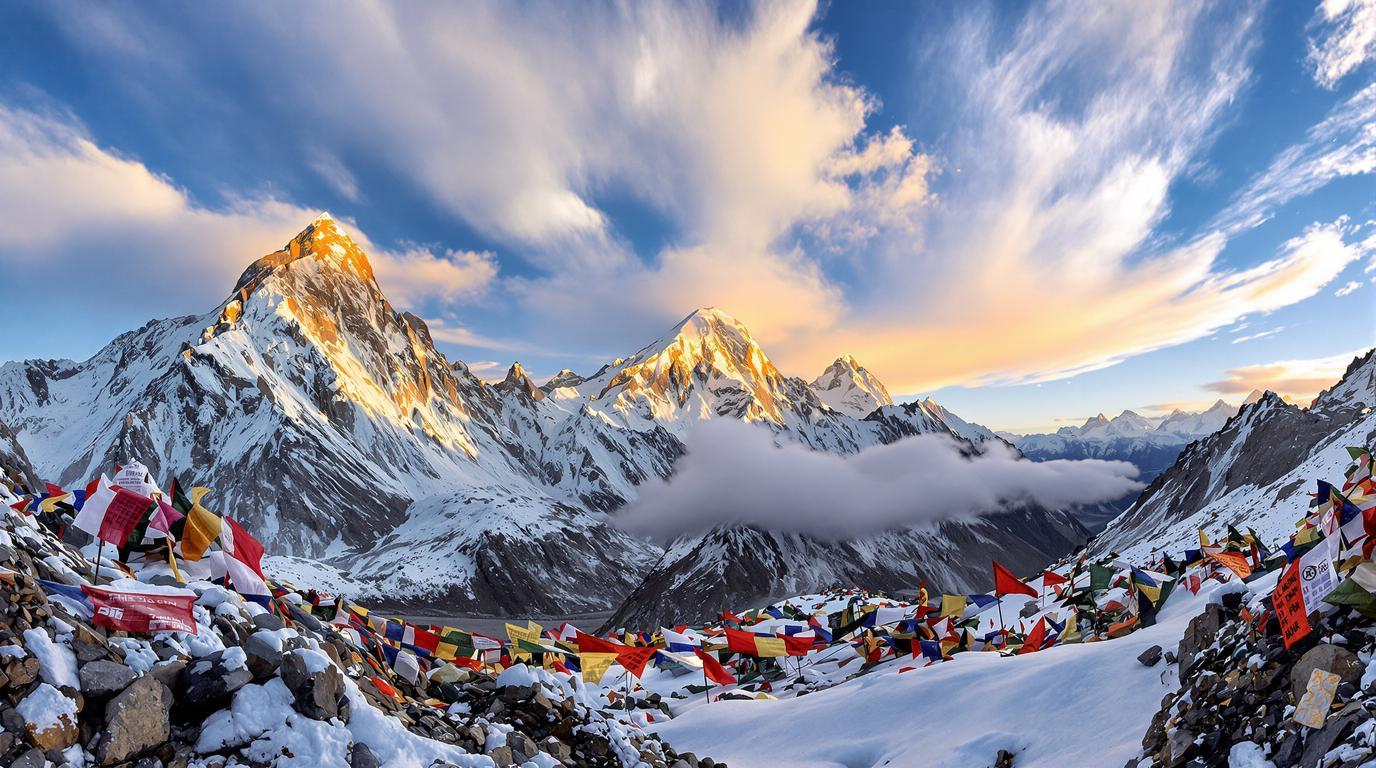At 17,598 feet above sea level, where the air thins and mountains scrape the sky, lies an adventure that transforms ordinary travelers into accomplished mountaineers. The Everest Base Camp Trek in Nepal’s Solukhumbu region isn’t just a hike—it’s a journey through Sherpa culture, Buddhist spirituality, and some of Earth’s most dramatic landscapes. Ranked 4th worldwide by Lonely Planet, this Himalayan odyssey rewards those willing to challenge their limits.
Where heaven meets earth: The route to Everest
Beginning in Lukla (9,383 feet), trekkers follow ancient trading routes through rhododendron forests and across swaying suspension bridges. The trail winds through Namche Bazaar—a vibrant Sherpa trading hub where yak bells chime and prayer flags flutter against stone buildings. As you ascend, the landscape transforms dramatically, trading lush valleys for lunar-like terrain dominated by glaciers and towering peaks.
The challenge that 56,000 adventurers accept annually
The typical 12-day journey demands both physical stamina and mental fortitude. Days consist of 5-7 hours of hiking, often at oxygen levels half that of sea level. “The mountain doesn’t test your physical strength as much as your willpower,” explains Pemba Sherpa, who has guided trekkers for over 15 years. “When your legs burn and your lungs struggle, it’s your mind that propels you forward.”
Teahouse culture: Where strangers become family
Evenings unfold in simple teahouses where trekkers from across the globe gather around yak-dung stoves, sharing stories and steaming cups of butter tea. These humble lodgings offer more than shelter—they’re cultural crossroads where lifetime friendships form over plates of dal bhat (lentil curry with rice) and conversations about the day’s triumphs.
Sunrise at Kala Patthar: The moment that justifies everything
Many trekkers agree that standing atop Kala Patthar (18,514 feet) for sunrise delivers the trek’s most transcendent moment. As dawn breaks, Everest’s pyramid peak emerges from darkness, its summit plume catching fire with the day’s first light. The panorama encompasses five of the world’s highest mountains, creating what many describe as life’s most profound sunrise experience.
Tengboche Monastery: Where spirituality soars
The 400-year-old Tengboche Monastery sits beneath Ama Dablam’s perfect peak. Here, maroon-robed monks perform centuries-old rituals amid colorful mandalas and butter lamps. “In the mountains, you feel the connection between earth and sky,” shares Lama Geshe Thupten. “Trekkers often discover something deeper than just beautiful views—they find inner stillness.”
Beyond the classic route: Hidden alternatives
While most follow the standard path, seasoned trekkers might consider detouring to the turquoise Gokyo Lakes or crossing the challenging Three Passes. These alternatives offer solitude that’s increasingly rare on the main route. If European adventures have previously captured your imagination, the Himalayan scale will redefine your concept of grandeur.
When to go: Timing is everything
The pre-monsoon (March-May) brings warmer temperatures and rhododendron blooms, while post-monsoon (September-November) offers crystal-clear mountain views. Winter trekking (December-February) means fewer crowds but requires serious cold-weather preparation. Avoid summer months when monsoon clouds obscure views and make trails treacherously slippery.
The perspective that stays with you forever
Unlike leisurely European train journeys or colorful coastal villages, this trek fundamentally changes how you view personal limits. Standing at base camp—where legendary mountaineering expeditions begin—puts life’s challenges into sharp perspective. The mountains teach patience, humility, and appreciation for simple comforts that ancient villages elsewhere might provide effortlessly.
When you return home, part of you remains in Nepal’s peaks. Years later, you’ll close your eyes and still see prayer flags snapping in the wind beneath Everest’s watchful gaze—remembering how, for a brief moment, you stood among the world’s highest mountains and discovered heights within yourself you never knew existed.
